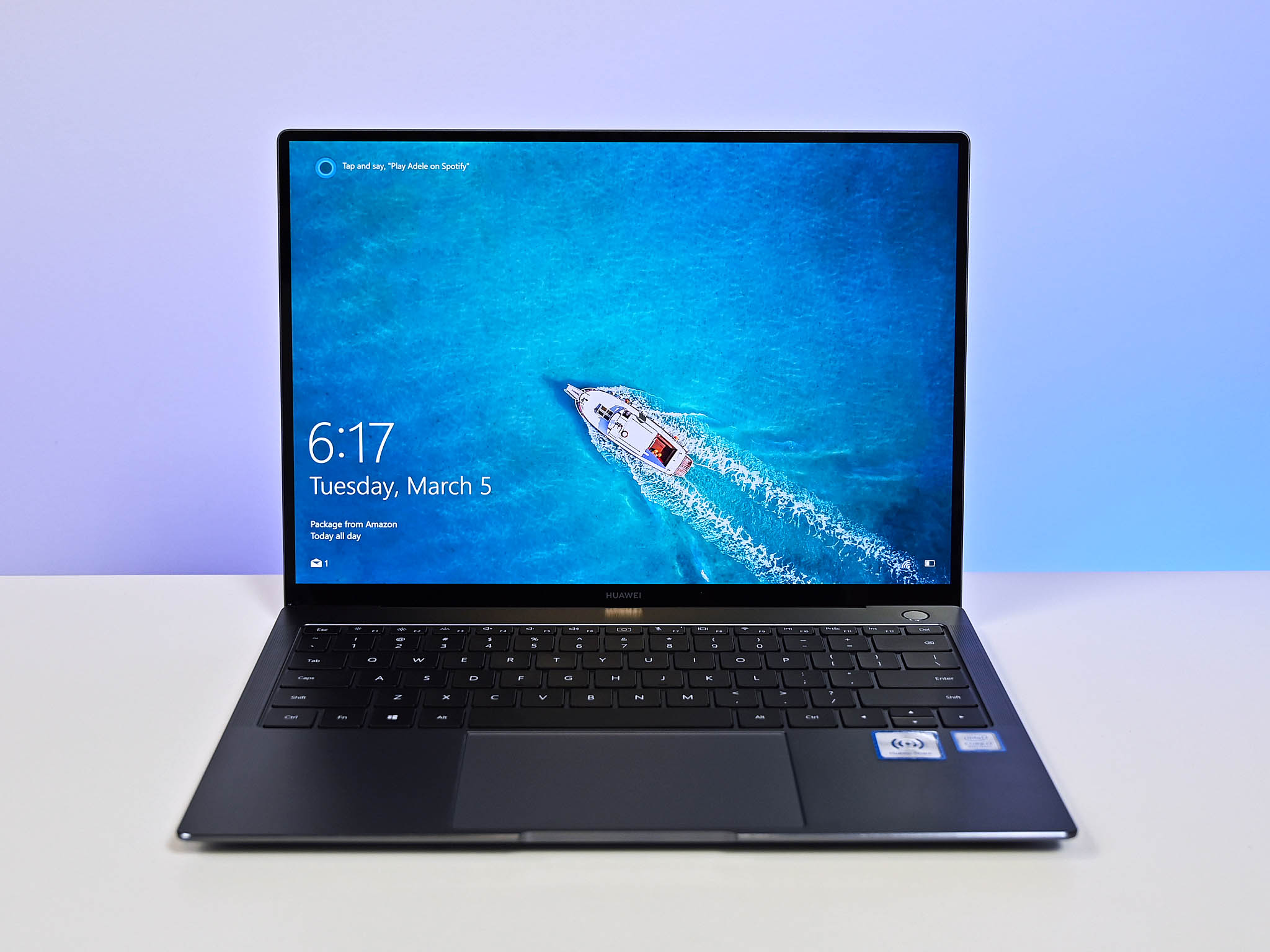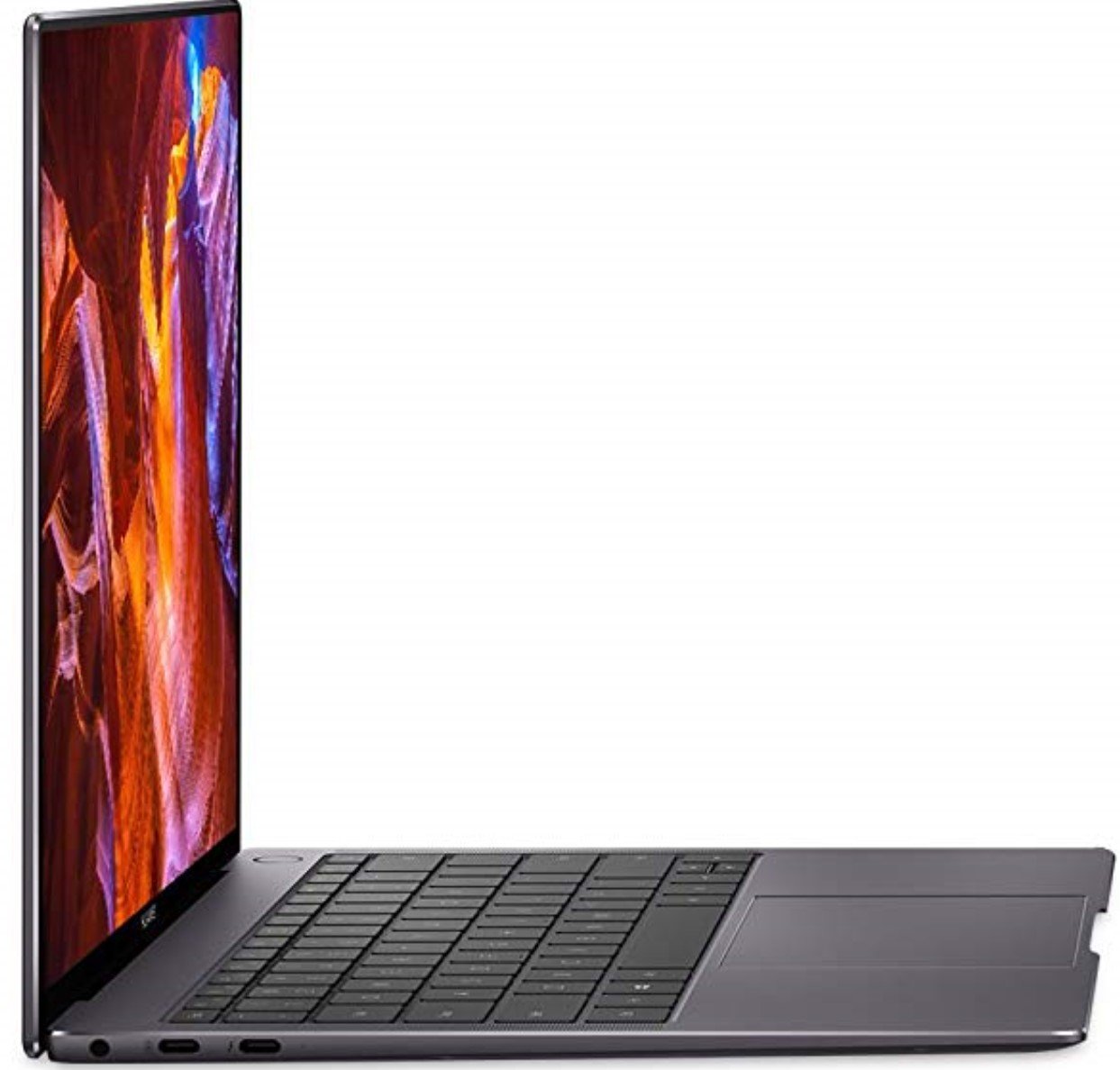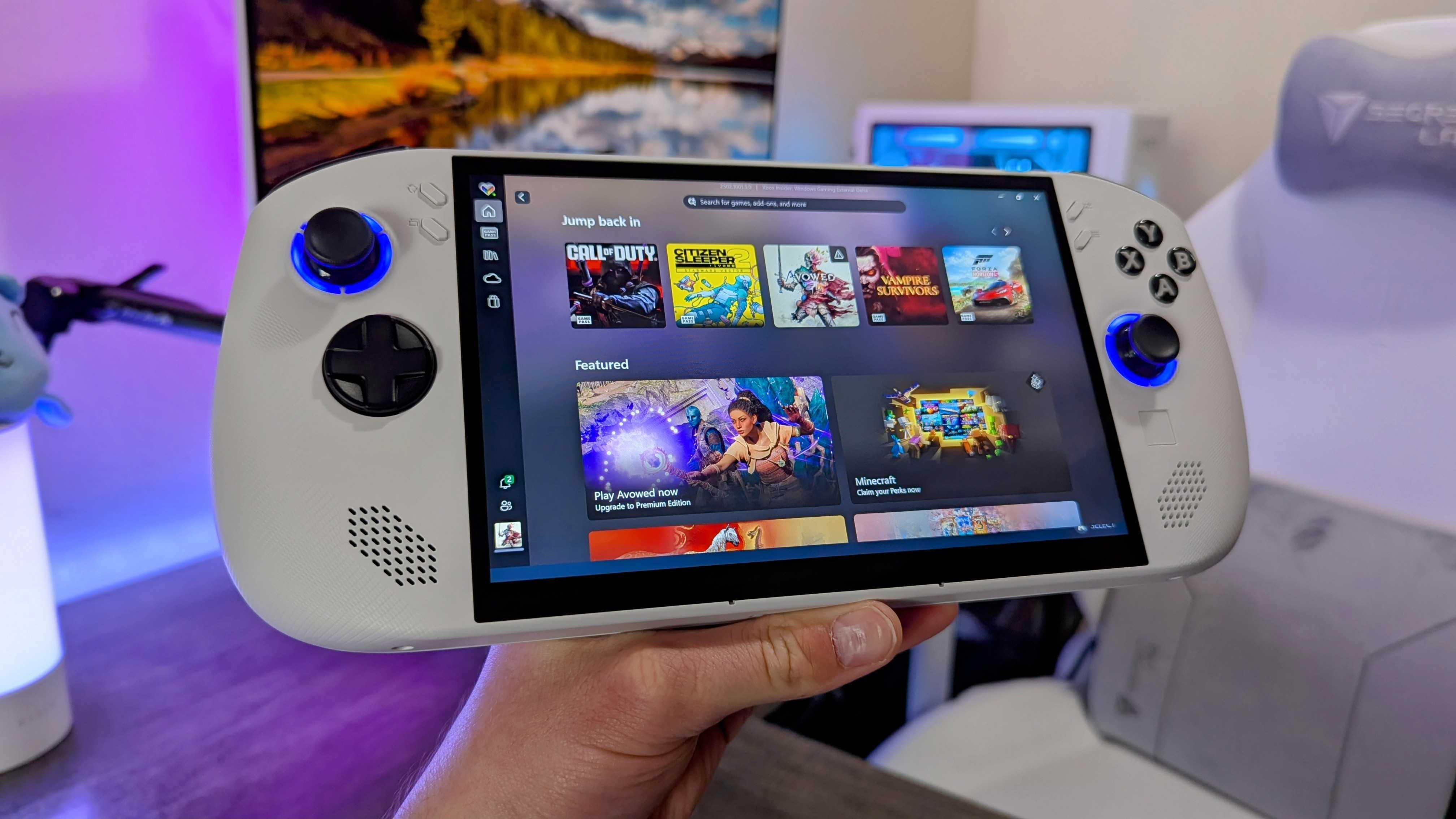
In 2018, Huawei launched the MateBook X laptop and MateBook 2-in-1 tablet to critical acclaim. The MateBook X Pro took it up a notch with even thinner display bezels, a quad-core i7 processor, and a smart pop-up web camera. Combined with the $1,499 price point, the MateBook X Pro quickly became one of the best values in the premium Ultrabook range.
For 2019, the company is not straying far from that formula. Barring a complete hardware redesign, there was little from the original that needed improving. The new 2019 edition tidies up some loose ends.
Editor's note: The 2019 MateBook X Pro is not yet available at the time of publication, nor are pricing or availability specifics. We will update this post accordingly when we receive those details.

From $1,299 (2018 version)Bottom line: Huawei's MateBook X Pro doesn't push the boundary any further in 2019 mostly because it already did with the last version. But an improved CPU, GPU, and cooling all add some nice refinements to an already-excellent laptop.
For
- Excellent 3:2 "3K" display.
- Outstanding performance.
- Exceptional value.
- Stylish but understated.
Against
- Bad camera angle.
- No pen support.
- Huawei name is controversial.
small changes add up
What's new in the 2019 Huawei MateBook X Pro?

Put the 2018 MateBook X Pro next to the 2019 version, and you'll struggle to see anything different, except for an ugly NFC sticker. But there are a few notable changes, including at least one to the exterior that people have been asking for since last year.
Here are the most significant modifications:
- Text-only logo; no more lotus flower.
- New Intel Core i7 8565U quad-core processor.
- New NVIDIA GeForce MX250 25-watt GPU.
- Thunderbolt 3 now supports full four PCIe lanes for bandwidth.
- NFC with Huawei Share 3.0 software.
- New Shark Fin 2.0 cooling solution.
None of those are particularly huge advances, but without a massive redesign there is little Huawei could do with the MateBook X Pro to make it better. The quad-core Intel "Whiskey Lake" processor and GPU are the latest available, leaving few options for Huawei.
Top of the line
Huawei MateBook X Pro tech specifications

The MateBook X Pro is your standard premium Ultrabook for 2019, but Huawei was able to combine many features that are usually spread across laptops into one excellent one.
| Category | Specification |
|---|---|
| Display | 13.9 inches, 3000 x 2000, 260 PPI, Touch |
| Aspect ratio | 3:2 |
| Contrast | 1500:1 |
| Max Brightness | 450 nits |
| Size | 11.96 in × 8.54 in × 0.57"= in |
| Weight | Approx. 2.93 lb |
| CPU | 8th Gen Intel Core i7 8565U8th Gen Intel Core i5 8265U |
| GPU | Intel UHD Graphics 620NVIDIA GeForce MX250 with 2GB GDDR5 |
| Storage | 256GB NVMe PCIe SSD512GB NVMe PCIe SSD1TB NVMe PCIe SSD |
| Memory | 8GB LPDDR3 2133MHz16GB LPDDR3 2133MHz |
| Ports | 3.5 mm jack, Two USB-C, Thunderbolt, USB-A 3.0 |
| Fingerprint sensor | Yes (Power button) |
| Camera | Front camera: 1MP |
| Audio | Dolby AtmosQuad Digital Microphones, Quad Speakers |
| Battery | 57.4Wh |
| Colors | Space Grey, Mystic Silver (edited) |
Stand out features include the 3:2 display aspect, which is what Microsoft uses in its Surface line. That display also has a 91 percent screen-to-body ratio, which is exceptional. Of course, that means you also get the industry's only pop-up web camera that is housed in the keyboard deck.
Likewise, for the NVIDIA GeForce MX250 for graphics – Huawei is the first to use it in a laptop we've reviewed.
The 2019 MateBook X Pro is truly a near-perfect laptop.
Quad-speakers are becoming more familiar, with HP leading the pack, but Huawei offers its audio package with Dolby Atmos-tuned ones.
The MateBook X Pro has an all-metal unibody design that is not damaged easily. Our version from last year has nary a ding or scratch. That metal adds up, though, and while the MateBook X Pro is far from heavy at under three pounds, it does feel heavier and denser than that. There's minimal flex to the chassis making this a very sturdy and solid-feeling laptop.


For user-upgrades, the screws on the bottom are easily removable, and with a simple pry tool you can access the innards. Not much can be upgraded, however, as RAM and the CPU are soldered to the board. Users can update the solid-state drive (SSD) if they wish, but they will have to remove the heat plate first, which is a bit cumbersome.
There is not much for input-output on the MateBook X Pro, but you get one USB Type-A port and two Type-C ports that support Thunderbolt 3.
What has not changed is the massive trackpad, which uses Microsoft Precision drivers. It's one of the best trackpads on a Windows PC, but it has a slight rattle that some may find unpleasant.
getting the basics right
Huawei MateBook X Pro screen, keyboard, and audio

The MateBook X Pro 2019 nails what I call the "fundamentals" of any laptop: typing, display, trackpad, and audio. It's hard to find another laptop that gets as much right.
The touch screen can hit around 420 nits of brightness (claimed is 450 nits), which is very bright, as most laptops are about 300 nits, by comparison. Color accuracy is 100 percent sRGB and 75 percent AdobeRGB – both exceptional scores.

The keyboard delivers around 1.2 mm of travel, and while it is a bit shallow, it's enjoyable to type on, with a good backlighting system.
Audio is pushed through four speakers on the top deck (they flank the side of the keyboard) and can get quite loud. The included Dolby software lets you tune things for various audio profiles including for music, movies, or voice. Overall, this is an excellent audio experience that's unmatched by most competitors.
powerhouse Ultrabook
Huawei MateBook X Pro performance and battery

Compared to other laptops in this class, the MateBook X Pro is a top performer. Manufacturers must decide how much power to deliver to the CPU to coincide with how effectively the device's thermals keep it cool. Huawei's 15-watt processor runs a bit higher than the competition, and it shows in the benchmarks.
The MateBook X Pro – when combined with an excellent Western Digital NVMe SSD and GeForce MX250 – results in one of the most potent 14-inch non-gaming laptops on the market.
CPU
Geekbench 4.0 Benchmarks (Higher is better)
| Device | CPU | Single core | Multi core |
|---|---|---|---|
| Huawei MateBook X Pro (new) | Core i7-8565U | 5,192 | 16,757 |
| Huawei MateBook X Pro (old) | Core i7-8550U | 4,491 | 12,825 |
| Huawei MateBook 13 | Core i7-8565U | 5,336 | 17,062 |
| Surface Laptop 2 | Core i5-8250U | 4,203 | 13,233 |
| Surface Laptop | Core i5-7200U | 3,725 | 7,523 |
| Surface Laptop | Core i7-7660U | 4,714 | 9,535 |
| LG gram 14 2-in-1 | Core i7-8565U | 4,829 | 13,889 |
| LG gram 17 | Core i7-8565U | 5,161 | 13,370 |
| Lenovo Yoga C930 | Core i7-8550U | 4,787 | 15,028 |
| Dell XPS 13 (9370) | Core i7-8550U | 4,681 | 14,816 |
| Lenovo Yoga C630 (ARM) | SD850 | 2,287 | 7,215 |
GPU
Geekbench 4.0 CUDA (higher is better)
| Device | GPU | Compute score |
|---|---|---|
| Huawei MateBook X Pro | MX250 | 45,365 |
| Huawei MateBook 13 | MX150 | 48,430 |
| Huawei MateBook X Pro | MX150 | 41,730 |
| Surface Laptop 2 | UHD 620 | 35,473 |
| Surface Laptop | UHD 620 | 19,256 |
| Surface Laptop | Iris 640 | 31,010 |
| Samsung Notebook 9 15 | MX150 | 48,536 |
SSD
CrystalDiskMark (Higher is better)
| Device | Read | Write |
|---|---|---|
| Huawei MateBook X Pro (new) | 3,416 MB/s | 2,779 MB/s |
| Huawei MateBook X Pro (old) | 3,012 MB/s | 2,085 MB/s |
| Huawei MateBook 13 | 3,436 MB/s | 2,553 MB/s |
| LG gram 14 2-in-1 | 558.1 MB/s | 523.1 MB/s |
| Lenovo Yoga C930 | 2,596 MB/s | 806 MB/s |
| Lenovo Yoga 730 13 | 2,790 MB/s | 506 MB/s |
| Lenovo IdeaPad 730S | 3,450 MB/s | 1,463 MB/s |
| Lenovo IdeaPad 530S | 2,566 MB/s | 520 MB/s |
| Lenovo Yoga C630 | 791 MB/s | 220 MB/s |
| ASUS ZenBook S | 550 MB/s | 512 MB/s |
| ASUS ZenBook 15 | 1,725 MB/s | 1,447 MB/s |
Huawei uses a newer Western Digital SSD with good results. Our model has a 1TB drive with excellent speeds.
That GeForce MX250, though, is barely worth mentioning – at least compared to the MX150. NVIDIA only has a slightly higher clock on the MX250 and, otherwise, it is the same hardware. Our benches don't show much of an improvement, but that may be due to less mature drivers during our testing.
Similarly, it's worth pointing out the new MateBook 13, which we recently reviewed has nearly the same hardware as the MateBook X Pro and even beats it ever so slightly in benchmarks. Those differences are more academic than substantial, however.
Battery life is a solid 10 hours with the MateBook X Pro, which is notable for its Core i7 processor and "3K" display with GPU. It's perfect for this class and slightly better this year due to the improvement in efficiency from Intel's latest processor.

For thermals, Huawei improved the MateBook X Pro's capability. While there is still only one large fan (versus two smaller ones in the MateBook 13), the new Shark Fin 2.0 design results in a quiet and satisfying experience. The fan has a nice low audio profile with no high-pitched whining. Temperatures are always cool, thanks to that new heat plate on the bottom, and the fans only come on during heavy load.
The best
Huawei MateBook X Pro is nearly perfect
There were few things to not like about the MateBook X Pro in 2018, and there are even fewer this year. The new CPU and GPU were expected, sure, but the slight change to the logo, the full four PCIe lanes for Thunderbolt 3, and improved cooling shows that Huawei listened to user complaints.
The bigger stories are the new software solution with Huawei Share 3.0 and the screenshot capability. If you also use a Huawei phone like the Mate 20 X you can quickly share photos to the MateBook X Pro by tapping the Share stick on the laptop's deck. The system works by pairing via NFC and then using Wi-Fi Direct for transfers. It's a rapid system that lets you send media to your laptop for editing (or using). You can even post photos and video back to the phone using the same process.
Editor's note: The garish NFC sticker is needed to pass through the metal chassis of the MateBook X Pro; were you to remove the sticker you would likely kill the Share function.

Huawei introduced a new three-finger swipe display gesture for screen capturing. You can then have the text pulled out of the image and use it in your Word or Office documents. It works brilliantly, making it perfect for business or productivity.
While everything else is the same from last year, that's OK because the MateBook X Pro always excelled compared to the competition. The 3,000 x 2,000 touch-screen 13.9-inch display is stunning; the audio is excellent; typing is solid; and the MateBook X Pro gets all-day battery life while still giving that extra GPU boost from NVIDIA.
Even the price of the MateBook X Pro is very good, with the cost of last year's model going as low as $1,499 for the top-tier Core i7 model. (The i5 model does not have the GPU.) Huawei purposefully undercut the competition to make a name for itself in the U.S., and it worked. This time, however, the price may go up making the value play a bit harder to make. We'll have to wait and see until full pricing and availability are announced.


If you recently picked up the 2018 MateBook X Pro, this refresh is so mimor that you won't suffer for want of the latest and greatest.
I don't love the bland, Apple-clone design, but clearly, most consumers do not care. Putting those complaints aside and the MateBook X Pro is still the king of the Ultrabooks ... as long as you don't want inking support or a 2-in-1 convertible.
Pricing and availability
Huawei expects the new MateBook X Pro for 2019 to go on sale globally sometime in late April or May of 2019. Final pricing has not yet been disclosed. We'll update pricing info when Huawei shares those details.

Daniel Rubino is the Editor-in-chief of Windows Central. He is also the head reviewer, podcast co-host, and analyst. He has been covering Microsoft since 2007 when this site was called WMExperts (and later Windows Phone Central). His interests include Windows, laptops, next-gen computing, and wearable tech. He has reviewed laptops for over 10 years and is particularly fond of 2-in-1 convertibles, Arm64 processors, new form factors, and thin-and-light PCs. Before all this tech stuff, he worked on a Ph.D. in linguistics, performed polysomnographs in NYC, and was a motion-picture operator for 17 years.


